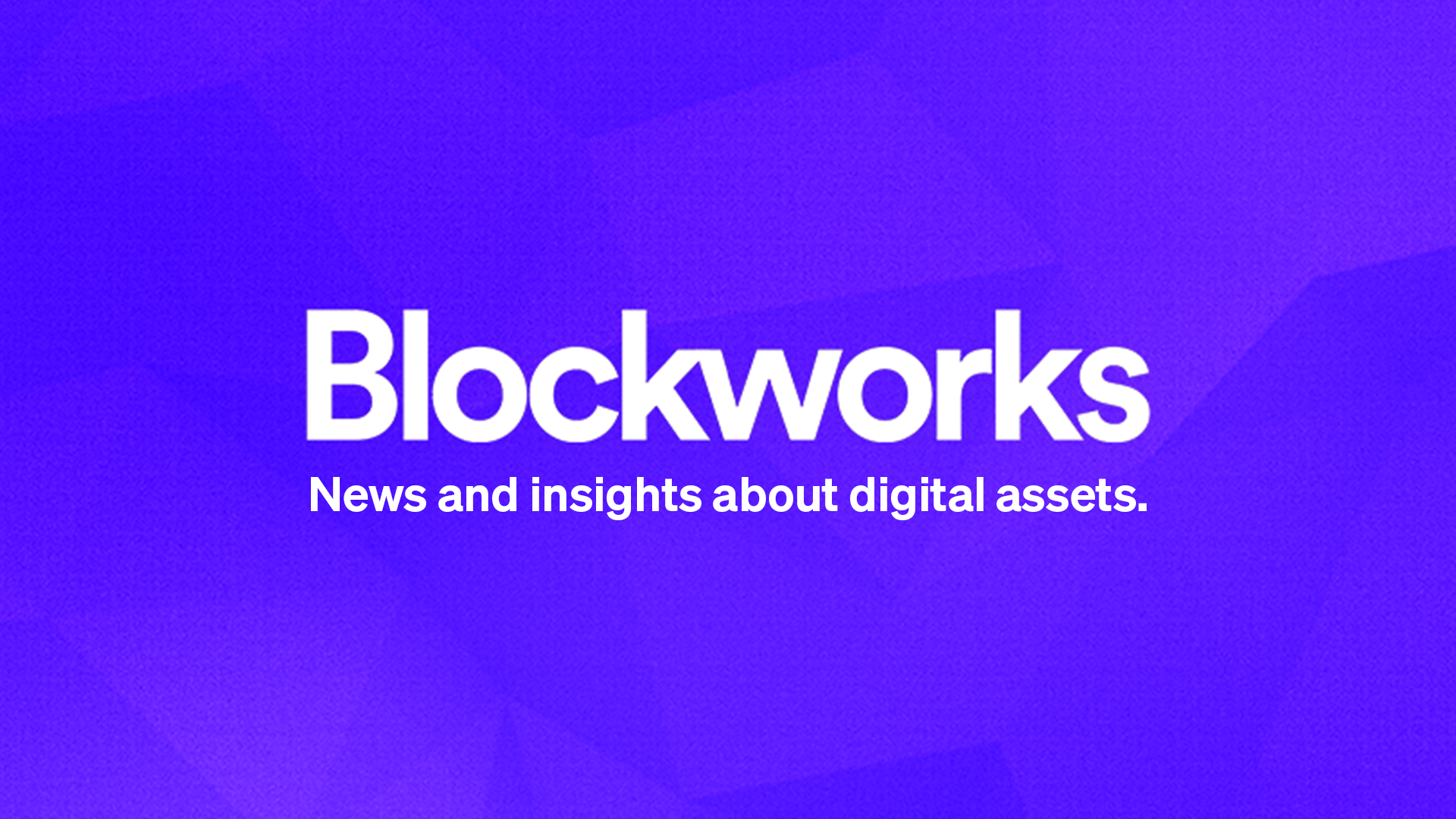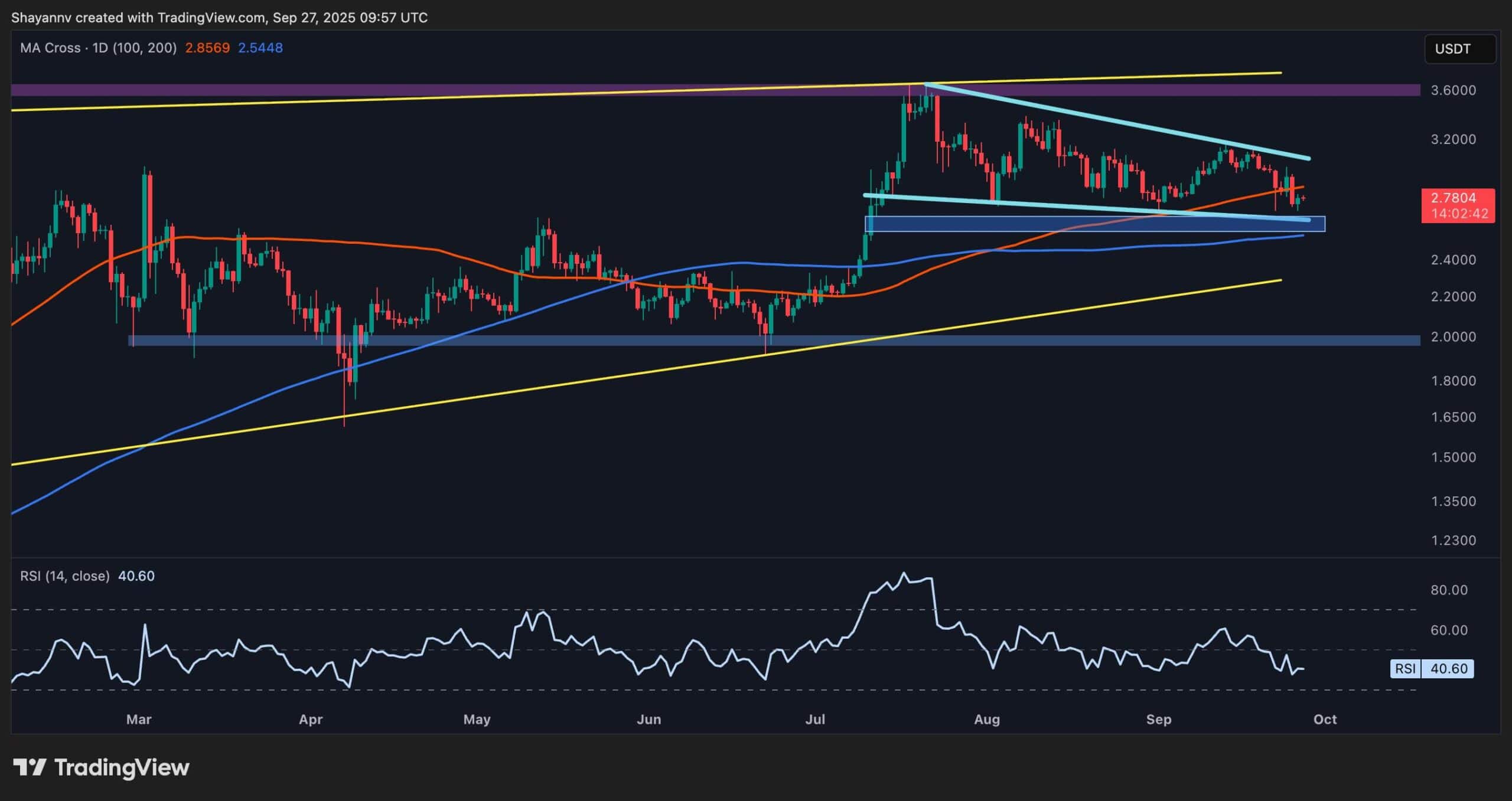ARTICLE AD BOX
Today, enjoy the On the Margin newsletter on Blockworks.co. Tomorrow, get the news delivered directly to your inbox. Subscribe to the On the Margin newsletter.
Welcome to the On the Margin Newsletter, brought to you by Ben Strack, Casey Wagner and Felix Jauvin. Here’s what you’ll find in today’s edition:
- Many braced for NVIDIA’s Q2 results. Felix breaks down the main takeaways.
- A closer look at the situation OpenSea potentially faces after getting a Wells notice from the SEC.
- How specific will Harris and Trump get about crypto policy before the election? An industry exec weighs in.
NVIDIA – Priced too perfectly?
Let’s set the record straight: NVIDIA is an incredible company achieving incredible things.
At the forefront of the emerging AI revolution, NVIDIA has grown its quarterly income at a staggering rate:

As we went into yesterday’s earnings release, the company had huge expectations to live up to. It was priced to perfection.
With that priced-for-perfection story, the outcomes quickly became one of what makes trading markets so difficult — the game between what is expected versus what the actual outcome is. That is what drives markets.
@Alpha_Ex_LLC had a fantastic analysis breaking down the implied volatility of the move expected from NVIDIA’s earnings.
For those not as deep in the weeds of options and how they price implied moves, the chart below shows a breakdown of the implied volatility (IV) of the stock right before each earnings release. This recent earnings release had the highest IV of all in recent memory.

What this translated to is the options market implied a move of 11% after the earnings report. As of time of writing, the stock is down 3.4%.
Therefore, even if you were directionally right on NVIDIA’s stock movement (a degen that yolo’d buying a call or a put, for example), you likely lost money from the resulting IV crush. This is because the actual move was less than the implied premium that was baked into the price of the option.
Setting aside wonkish options talk, the second leg of this quarter’s NVIDIA story was one of a stock that, as mentioned above, was priced for perfection.
One thing is clear from these excellent charts from regular On the Margin guest Andy Constan: Despite continuous beats in earnings versus consensus expectations, the delta of those surprises is actually heading lower and shines a light on just how much perfection has been baked into the darling of this equity bull market.


In terms of what’s next, that’s anyone’s guess. What we do know is as we move through future quarterly results for this AI leader, we will naturally get closer to a slowing growth rate and a corresponding compression in upside surprises as analysts get a better handle on whether the company finds a more sustainable growth rate.
— Felix Jauvin
$58.7 million
The current market cap of EURC, Circle’s Euro-backed stablecoin. It’s nothing compared to its dollar-backed counterpart, USDC; but EURC has been on the rise this summer as MiCAR regulations come into effect.
After its launch on Base, EURC’s issuance rate increased by almost 40%, and its market cap is now up around 70% from a month ago.
Another day, another (pending) lawsuit
NFT marketplace OpenSea yesterday revealed it received a Wells notice from the SEC. If you’ll recall from the several Wells notices we’ve covered, it’s a warning from regulators that there’s a possible lawsuit/enforcement action coming.
It’s not the first time we’ve seen the SEC go after NFTs.
Regulators in September 2023 charged and settled with the project “Stoner Cats 2.” Per the settlement, the NFT issuer agreed to cease and desist from offering the NFTs and pay a $1 million fine. SC2 also agreed to destroy all NFTs in its possession and issue a notice of the order on its website and social media channels, the SEC said.
What’s different about the OpenSea situation is that the SEC wouldn’t be going after issuers this time. It would be going after the platform.
Sound familiar? It should.
Back in 2020 the SEC sued Ripple over its XRP token. Years (and millions of dollars later), a court partially sided with securities regulators, ruling that institutional sales of XRP were considered unregistered securities offerings. Ripple got a partial win too, though, when the judge declared that retail sales on secondary markets (i.e. exchanges) were not securities.
Since the Ripple suit, though, we’ve seen the SEC change its strategy. Lately it’s been going after exchanges. Coinbase, Binance, Kraken — the list goes on. In each suit, the SEC claims the exchange is operating as an unregistered securities broker for listing tokens securities regulators claim are, well, securities.
I’ve posed the question before, and I’ll do it again: Are we going to see more lawsuits against individual issuers, either of tokens or NFTs?
Legal experts, if you have answers/predictions/comments, I’d love to hear them!
– Casey Wagner
More crypto talk coming from presidential hopefuls?
Some expect the election’s potential impact on crypto to be rather binary. Trump and the Republicans are good for crypto; Harris and the Dems would more likely be bad for the industry (or at least not as good).
The Trump-would-be-better-for-crypto narrative has “more substance to support it” at this point, said 0x general counsel Ashley Ebersole.
After all, the former president in July made some promises at Bitcoin 2024 in Nashville and has said he would support American bitcoin miners.
That said: “Harris is new enough that her policy positions are still being built out in a lot of areas, not just in crypto,” Ebersole told Blockworks.
Harris comes from a Biden administration that has shown “relative hostility” toward crypto, the 0x executive (and former SEC senior counsel) argued. President Biden vetoed a resolution set to invalidate the SEC’s Staff Accounting Bulletin (SAB) 121 and many believe SEC Chair Gary Gensler has treated the industry unfairly via his agency’s enforcement actions.
So it’s her move.
An adviser for Kamala Harris’s campaign, when asked about crypto, did tell Bloomberg News last week: “She’s going to support policies that ensure that emerging technologies and that sort of industry can continue to grow.”
A burning question remains: How specific will these candidates get on crypto-related policies prior to Nov. 5?
Trump may not feel the need to offer more concrete crypto policy details unless forced to do so.
“If Vice President Harris were to come out and suddenly make a bunch of blustery statements about crypto and maybe even go a step further and say, ‘On day one I’m going to do X, Y and Z,’ then I think that would require a [fuller] response from the Trump side to at least keep things in parity.”
The first presidential debate between Trump and Harris is set for Sept. 10. Crypto industry watchers will be listening for a question about the space. If not addressed explicitly, remarks about innovation or regulatory agencies more broadly could be helpful.
But at the end of the day, “Talk is cheap and you can say a lot of things,” Ebersole said. “Actually taking action is what will be the real catalyst here for a change in policy.”
Those actions — from either candidate, if elected — could take the form of actively working with Congress to pass crypto legislation, the 0x executive noted. Or it could be a more “silent” approach that involves simply stacking agencies with crypto-forward leaders (Trump said he would fire Gensler).
Because a lot can happen in two months, it seems patience remains the name of the game.
Check out a full version of my interview with Ebersole tomorrow at Blockworks.co.
— Ben Strack
Bulletin Board
- Speaking of OpenSea, the platform has facilitated about 58% of the $62.75 billion in total NFT trade volumes since August 2020. Check out Blockworks editor David Canellis’ story for more details on where NFT activity takes place.
- BTC and ETH have each seen a nice bump in the past 24 hours — rising 2.4% and 1.7%, respectively, as of 1:30 pm ET. Bitcoin’s price of roughly $60,500 is below an apparent resistance level of $65,000 displayed last week, according to YouHodler risk manager Georgios Parfenidis. “A strong breakout of this level can indicate a potential uptrend,” he noted.
- The US spot ether ETFs saw slight net inflows of roughly $6 million on Wednesday, Farside Investors data shows. This ended a nine-day net outflows streak. The “first catalyst” for more inflows into these funds in the months and years ahead is education, Grayscale’s John Hoffman told Blockworks.
Start your day with top crypto insights from David Canellis and Katherine Ross. Subscribe to the Empire newsletter.
Explore the growing intersection between crypto, macroeconomics, policy and finance with Ben Strack, Casey Wagner and Felix Jauvin. Subscribe to the On the Margin newsletter.
The Lightspeed newsletter is all things Solana, in your inbox, every day. Subscribe to daily Solana news from Jack Kubinec and Jeff Albus.
 (1).png)
 1 year ago
497717
1 year ago
497717








 English (US) ·
English (US) ·